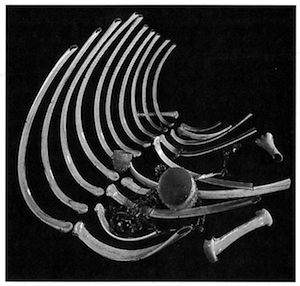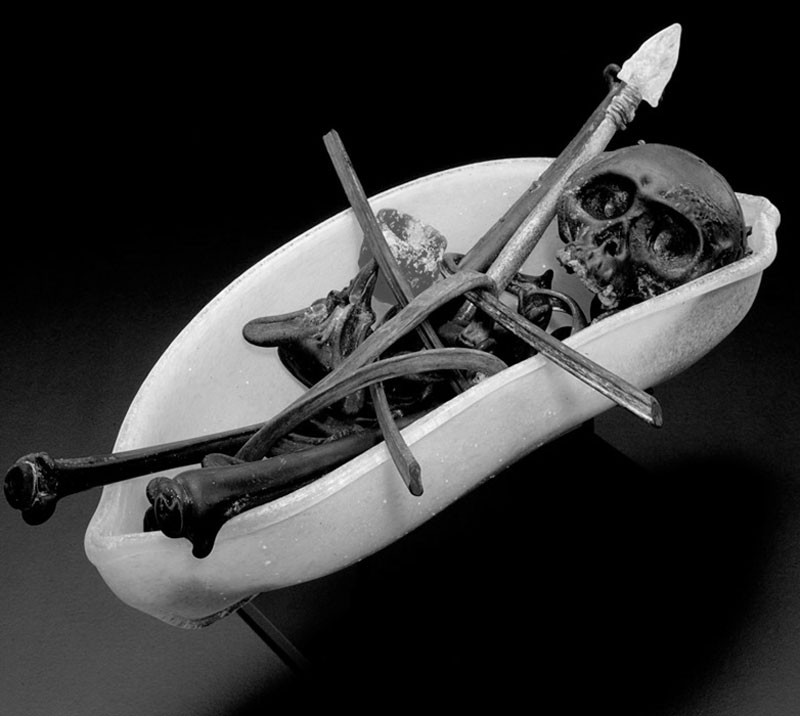On each branch of the trees in my garden
Hang clusters of fruit, swelling and ripe.
In the end, not one piece will remain.
My mind turns to thoughts of my death.
—Seventh Dalai Lama
Many meditations focus on something associated with beauty or joy or peace. Perhaps some of you may puzzle over why a contemplation would focus on death. Actually, in the teachings of the Buddha, it’s a very important practice. It’s part of the general importance given to impermanence, change—and death is a dramatic case of that. Reflections on anicca—that everything that arises passes away—is central to wisdom practice.
A contemplation on death is neither an exercise in morbidity nor a dwelling on the unhappy side of life. In fact, when marana-sati (death awareness practice) is done properly, it’s quite astonishing how much stability and peace come out of it. Perhaps, not too surprisingly, this is because most of us are imbalanced when it comes to death. We haven’t come to terms with the nature of our bodies, and we don’t see death as a natural process. So we have all kinds of funny reactions to it: excessive joking, or avoidance, or preoccupation in a morbid way. Death awareness practice can bring us into balance.
The Sattipatana Sutta, where the Buddha laid out the essentials of mindfulness practice, includes a cemetery contemplation. At the time of the Buddha the yogis would go to actual cemeteries and sometimes live there for extended periods of time. Often the dead bodies were not buried or burned but just discarded, left in cemeteries, out of compassion for the animal kingdom, for vultures and other animals to eat. So yogis would observe the human body in various states of decomposition and work with what that brought up in themselves. The whole point for these yogis was to see that whoever this body belonged to had been subjected to the same law that they were subject to.
Meditation on death and cemetery contemplations are still done in the forest monasteries of Asia. In Buddhism it is our practice to make ourselves go through the fear of dying now, when many of us are quite young, so that later on it isn’t a problem, or it’s just less of a problem.
Related: A Good Death

The contemplation of death is a wisdom practice. Wisdom has to do with seeing clearly, seeing things as they are, that is, coming to terms with the way things are. “Perfect seeing” is one translation of vipassana, of insight. What’s implied is that to begin with, we don’t see very clearly, and we certainly don’t look into the process of life and death very clearly.
You may find that death contemplation motivates you tremendously and takes you through very hard times in practice, such as restlessness, sleepiness, or pain. In my own case, if I feel sleepy when I’m sitting, I just reflect on my own death, and it wakes me up very quickly! Or if I get caught in some pettiness, a resentment, or preoccupation, again I reflect on my own death. Very few things stand up when you shine the light of death on them. As Don Juan suggests, take death as your advisor.
In the Dhammapada, another great teaching of the Buddha, it is said that people would never fight or argue if they fully realized they were going to die. As we contemplate death, we can also learn compassion for our enemies. We see that we are all comrades. It softens the heart when we recognize that we all have the same fate.
While there are many benefits that can come from death awareness practice, the main value from the point of view of “dharma life,” life in practice, is to get our priorities in order. Here you are, running around doing all kinds of things, spending many hours sleeping or eating. Just the simple invitation made here, to reflect on your death, can help you assess how you spend your energy. Given that you don’t have “forever,” perhaps you will decide radically to alter your priorities and give your practice much higher consideration.
MARANA-SATI: Death Awareness Practice Outline
The inevitability of death
1. Everyone has to die.
2. Our life span is decreasing continuously.
3. The amount of time spent in our life to develop the mind is very small.
The uncertainty of the time of death
4. Human life expectancy is uncertain.
5. There are many causes of death.
6. The human body is so fragile.
The fact that only insight into dharma can help us at the time of death
7. Our possessions and enjoyments cannot help.
8. Our loved ones cannot help.
9. Our own body cannot help.
HOW TO DO IT
Many of you who have been practicing vipassana may never have done a contemplation of this sort, because the emphasis in our practice is on the direct perception of what’s happening in the moment. When you’re practicing vipassana, you’re not encouraged to think. But in death awareness practice you learn that there’s a way of using the thought process itself very creatively so that it’s an aid to the development of wisdom.
It’s helpful to begin by becoming mindful of the breath or making use of some other technique that enables you to become calm. Sometimes keeping a light connection with the breath throughout the practice can soothe and steady the mind and actually deepen the reflection.
Take perhaps twenty minutes a day. Don’t overdo it—you’ll know what feels right. First find your own way to calm the mind. Select one of the possible contemplations and go into it in some depth. When you are finished with your contemplation, skim over the others on the outline so that, in some way, they become part of what you learn that day.
Here’s a possible scenario: You take up a thought, let’s say, “Everyone has to die.” Then you have license to bring that thought inside, to reflect on it, to contemplate it. This is where the practice can become very creative. Each person can do it in his or her own unique way. You can, in a sense, have a conversation with yourself: you can speculate, you can draw on the richness of your own life experience, you can call up specific images, objects, people. You can visualize yourself dying, or people you know who are already dead; you might visualize your family plot at the cemetery or perhaps your own skeleton. The degree of samadhi, the degree of calm and concentration that you bring to your contemplation has a great deal to do with the quality of it and the fruit you receive from it. If you have a strong samadhi practice already, you will become very rich. You can question, reflect, and play with it.
Now, while you are doing this reflection, from time to time, a certain feeling will come up. For example, if you are contemplating the inevitability of death, as you take the thought inside and go deeper and deeper with it, a kind of intuition may arise. Ideally it’s not in words—it’s a feeling or a strong conviction that impresses itself upon the heart. Suddenly you feel, “Wow! I already know this.” At that point, drop all of the creative thinking, analysis, investigation, and reflection, and just bring your samadhi to bear on the feeling. Mix whatever degree of concentration or stability of mind you have with that feeling. Soak it in the calm. This makes it more alive, gives it more depth, more fullness, more meaning. Then be with it. That’s your object of contemplation.
Now you are doing a kind of one-pointed meditation. In the beginning this may be just a few seconds. It may fade, but don’t struggle to retrieve it.
Remember, in death awareness practice, as in vipassana, we are trying to understand impermanence, unsatisfactoriness, and no-self, only now it’s through a kind of disciplined use of thought. It’s a focused use of thought so that thought becomes an ally, rather than an enemy, of dharma.
Related: Creating the New American Buddhist Funeral
♦
This piece was reprinted with permission from Inquiring Mind.
Thank you for subscribing to Tricycle! As a nonprofit, we depend on readers like you to keep Buddhist teachings and practices widely available.
